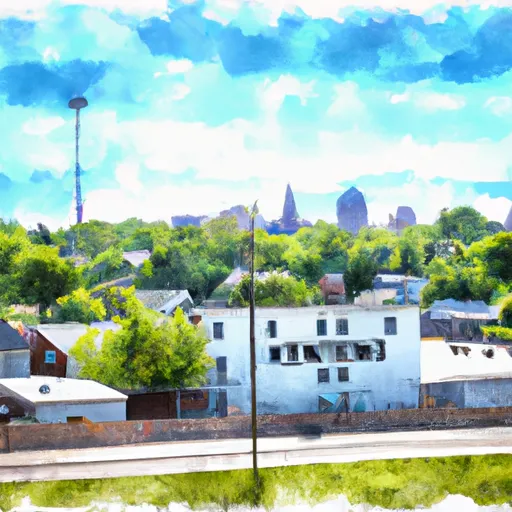-
 Snoflo Premium
Snoflo Premium
Get unlimited access to all our content
With no Ad interruptions! - Start Your Free Trial Login with existing account
Kenneth
Eden Index
Climate
6.5
•
Recreation
1.1
•
Community
•
Safeguard
3.0/10

Kenneth, Minnesota is a small town located in Rock County, southwestern Minnesota. The town experiences a continental climate characterized by warm summers and cold winters. Summers in Kenneth are usually mild, with average temperatures ranging from the mid-70s to low 80s Fahrenheit. Winters, on the other hand, are cold and snowy, with average temperatures ranging from the teens to low 30s Fahrenheit.
The hydrology of Kenneth is mainly influenced by the nearby Rock River, which runs through the town. The river serves as a source of freshwater and contributes to the area's natural beauty. Additionally, there are several small lakes and ponds scattered around Kenneth, making it a great destination for fishing and boating enthusiasts.
Outdoor recreation opportunities in Kenneth are abundant. The town is surrounded by picturesque landscapes, offering opportunities for hiking, camping, and bird-watching. The Rock River provides excellent fishing spots for anglers, with various species including walleye, bass, and crappie. During the winter months, residents and visitors can enjoy activities like ice fishing and snowmobiling.
In conclusion, Kenneth, Minnesota offers a continental climate with warm summers and cold winters. Its hydrology constituents are primarily influenced by the Rock River, providing recreational opportunities for fishing and boating. The town's natural surroundings provide a range of outdoor activities for residents and tourists to enjoy throughout the year.
What is the Eden Index?
The Snoflo Eden Index serves as a comprehensive rating system for regions, evaluating their desirability through a holistic assessment of climate health, outdoor recreation opportunities, and natural disaster risk, acknowledging the profound impact of these factors on livability and well-being.
Climate Health Indicator (CHI): 6.5
Kenneth receives approximately
723mm of rain per year,
with humidity levels near 82%
and air temperatures averaging around
8°C.
Kenneth has a plant hardyness factor of
4, meaning
plants and agriculture in this region thrive during a short period during spring and early summer. Most
plants will die off during the colder winter months.
By considering the ideal temperature range, reliable water supplies, clean air, and stable seasonal rain or snowpacks, the Climate Health Indicator (CHI) underscores the significance of a healthy climate as the foundation for quality living.
A healthy climate is paramount for ensuring a high quality of life and livability in a region, fostering both physical well-being and environmental harmony. This can be characterized by ideal temperatures, reliable access to water supplies, clean air, and consistent seasonal rain or snowpacks.
Weather Forecast
Streamflow Conditions
Big Sioux
Area Rivers
Big Sioux
Snowpack Depths
Big Sioux
Reservoir Storage Capacity
Big Sioux
Groundwater Levels
Recreational Opportunity Index (ROI): 1.1
The Recreational Opportunity Index (ROI) recognizes the value of outdoor recreational options, such as parks, hiking trails, camping sites, and fishing spots, while acknowledging that climate plays a pivotal role in ensuring the comfort and consistency of these experiences.
Access to outdoor recreational opportunities, encompassing activities such as parks, hiking, camping, and fishing, is crucial for overall well-being, and the climate plays a pivotal role in enabling and enhancing these experiences, ensuring that individuals can engage in nature-based activities comfortably and consistently.
Catastrophe Safeguard Index (CSI):
The Catastrophe Safeguard Index (CSI) recognizes that natural disaster risk, encompassing floods, fires, hurricanes, and tornadoes, can drastically affect safety and the overall appeal of an area.
The level of natural disaster risk in a region significantly affects safety and the overall livability, with climate change amplifying these risks by potentially increasing the frequency and intensity of events like floods, fires, hurricanes, and tornadoes, thereby posing substantial challenges to community resilience and well-being.
Community Resilience Indicator (CRI):
The Community Resilience Indicator (CRI) recognizes that education, healthcare, and socioeconomics are crucial to the well-being of a region. The CRI acknowledges the profound impact of these elements on residents' overall quality of life. By evaluating educational resources, healthcare accessibility, and economic inclusivity, the index captures the essential aspects that contribute to a thriving community, fostering resident satisfaction, equity, and social cohesion.

